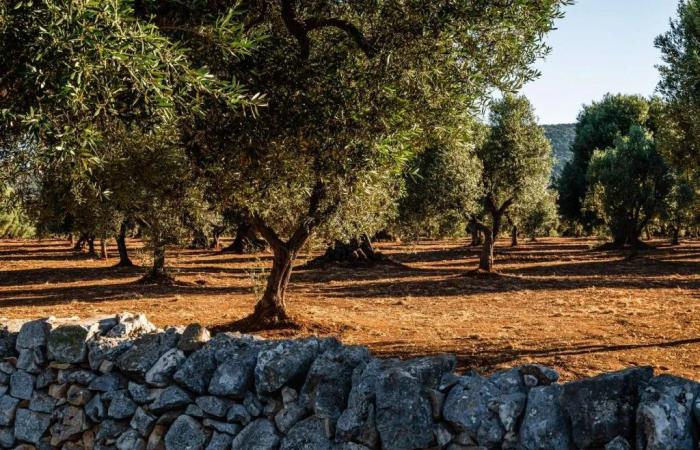What good did the G7 summit in Puglia leave behind? Puglia. The summit with the planet’s greats does not seem to have left any important legacies, turning points or great results. Of that crowded concentration of powerful people in that slice of land disputed by the sea and kissed by the sun, Puglia remains, a region discovered only with the third millennium. Before, it was on the shadow side of history and geography. You spoke of Italy and, after Rome, the cities of art or business came to mind. You spoke of regions and Tuscany, Umbria appeared or if you went south, the names on everyone’s lips were Naples and Sicily. Even the history of Italy was made on the Tyrrhenian side; even Garibaldi’s Thousand never thought of passing through the Adriatic side. So philosophy, literature, art, in Magna Graecia, have great names and illustrious thoughts on that side, not in Puglia.
Until the nineties, Bari was Beri, a malevolent caricature of many local comedians and character actors, elevated to the power of Lino Banfi. Thirty years ago, a film by the great Clint Eastwood, The Bridges of Madison County, made an impression, in which the protagonist, the great Meryl Streep, confessed to being originally from Bari. What an extravagance, and what a miracle when even Clint in the film confessed to knowing Bari, he had been there to embark for Greece (that’s what Puglia was, the springboard for Greece); he had seen Barivecchia and liked it even though at the time it was considered a dangerous area, in the hands of criminals and pickpockets.
Sure, there were Renzo Arbore and Domenico Modugno, but one passed himself off as Neapolitan (like Riccardo Muti from Molfetta, after all) and the other passed himself off as Sicilian. On the political level, there was Aldo Moro, but his identity, like his inflection, seemed so weak and vague, indeed wavering, between Rome and Byzantium, between the DC, the University and a generic Levant; Moro was Apulian only for the Apulians, not for everyone else. People came to Apulia perhaps for Padre Pio, but he was from Pietrelcina and spoke with a Neapolitan-Samnite inflection. At most there was Gargano.
In short, Puglia went unnoticed. Then, towards the end of the last millennium, something happened. The decline of Naples and the rest of the south, branded with the worldwide brand of mafia, ‘ndrangheta and camorra, compared to which the Apulian underworld was nothing despite the sumptuous name of Sacra corona unita. Then the discovery of dishes and products of the Apulian nature: broad beans and chicory, lampascioni and turnip tops, rice, potatoes and mussels. Damn, what a delight… Then the exploit of cinema and TV dramas, which found their natural location in Puglia and its surroundings. The Apulian masseria, the white villages, the trulli, the controra, the baroque wonders of Lecce, the old women of Bari who make strascinate – orecchiette – on the street, the raw fish, at home in Bari and Taranto before Japanese sushi; a trail of folklore, the discovery of Salento… In that wake the crazy success of Checco Zalone, the pizzica and the taranta, the arrival of VIPs in the Apulian countryside. How beautiful it is to make love from Vieste down…
It was an escalation, which was beginning to crack due to excess tourism, overdose of films and pugliofilia; when the G7 summit arrived in Borgo Egnazia and surrounding areas. Thousands of journalists, not only cell phones but cameras focused on Puglia, trulli on worldwide vision. First the dispute between the Swabian castles to host them, that of Federico in Castel del Monte or in Barletta, in the end the one in Brindisi was chosen; the great ones taken around, in every sense, to see the ceramics of Grottaglie like any other group of cruise passengers, like a carpet workshop in the casbah. Then the Bigs among the Olive Trees, Bocelli’s voice, you eat them, and what you eat. Yes, the catch of the day, taralli and focaccia, lasagna and various delicacies, not only local. But the main discovery of the table was one, coming from the poor and authentic cuisine of the deepest Puglia: bread and tomato. The dinner of the poor, the snack of the rich, the variant of lunch by the sea, without bringing the box of baked pasta as in the past. By bread we meant stale bread; there is also a primitive winter version, which we call caldello, toasted bread on which hot water, preferably sea water, is generously poured, plus tomatoes, garlic, oil, celery and various other vegetables.
Besides the winter version, the classic basic ingredients are tomatoes, oil and oregano, all from Puglia, plus a pinch of sea salt, perhaps from the Apulian salt pans, and a few basil leaves. Those who exaggerate get other stuff in there, even onions and hard-boiled eggs. There are countless versions, including local and family variations but the starting point was creative poverty, the recycling of leftover bread plus the smell of the sea heated on the fire, at least the shadow of the tomatoes and the rest is fantasy; that is, other ingredients for those who can afford it or just imagination for those who couldn’t do anything else.
Bread and tomato, which also gives its name to the most famous beach in Bari, has become popular among the world’s big names, imaginative local poverty has seduced powerful global wealth. The south of the world in a wholemeal frisella.
Writing about Puglia from afar, I felt a nostalgic tingling, an irresistible desire to return, a hunger for Puglia, bread and tomato; and a book that came to me at the right time, Ritorno in Puglia by Marco Ferrante, acts as a caption to my desire. What a desire to return, to dive into childhood; now that the Greats have gone, what a desire to return to being small…
(Panorama, n.29)
Share this article



